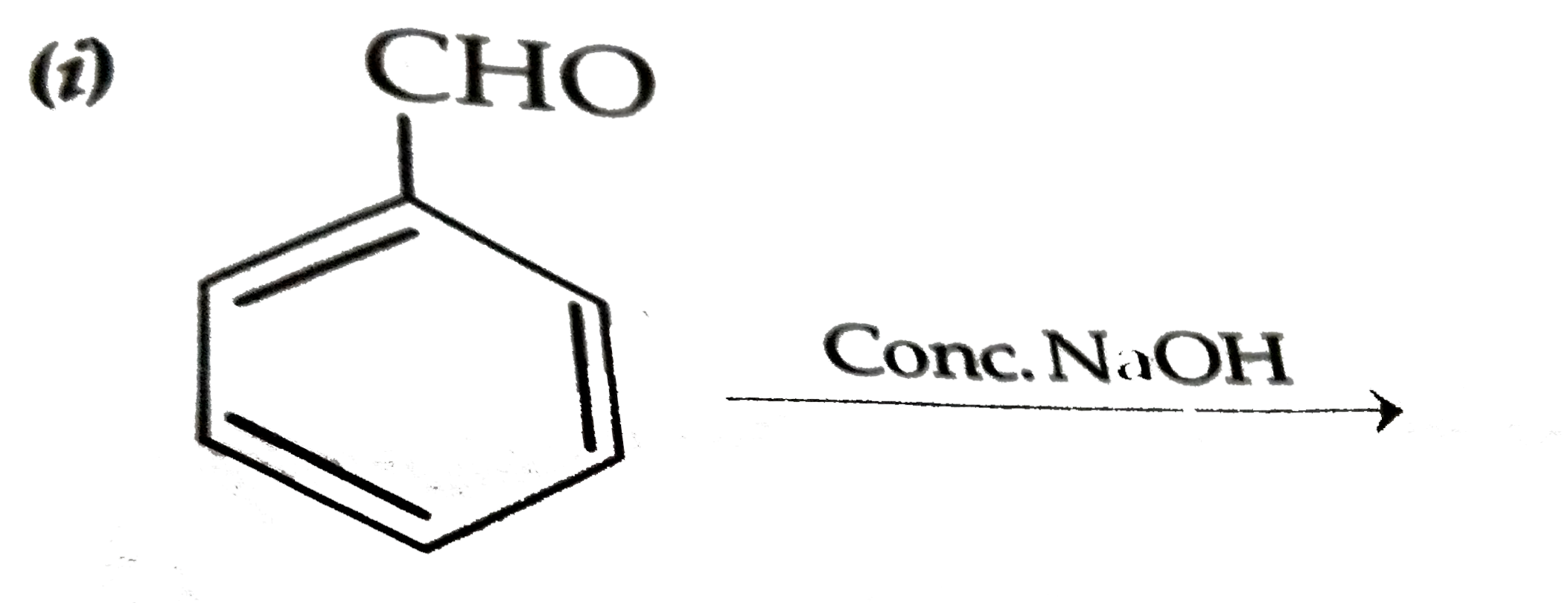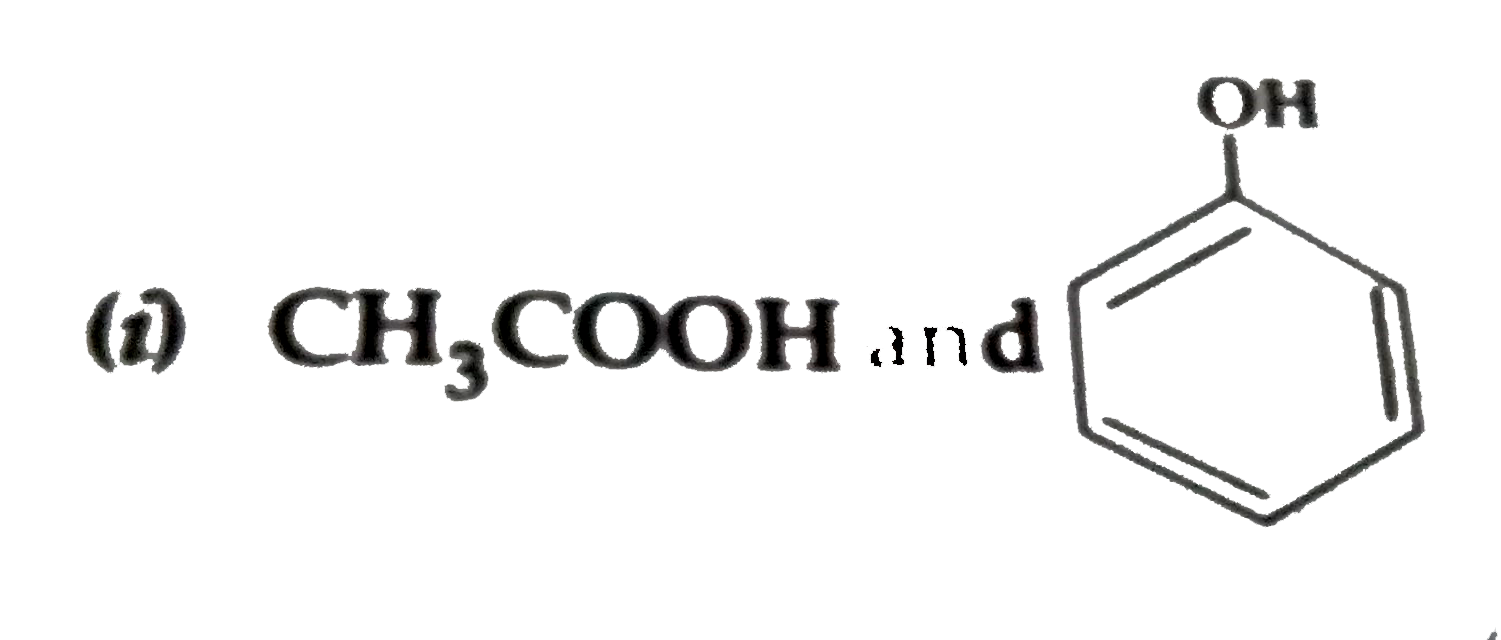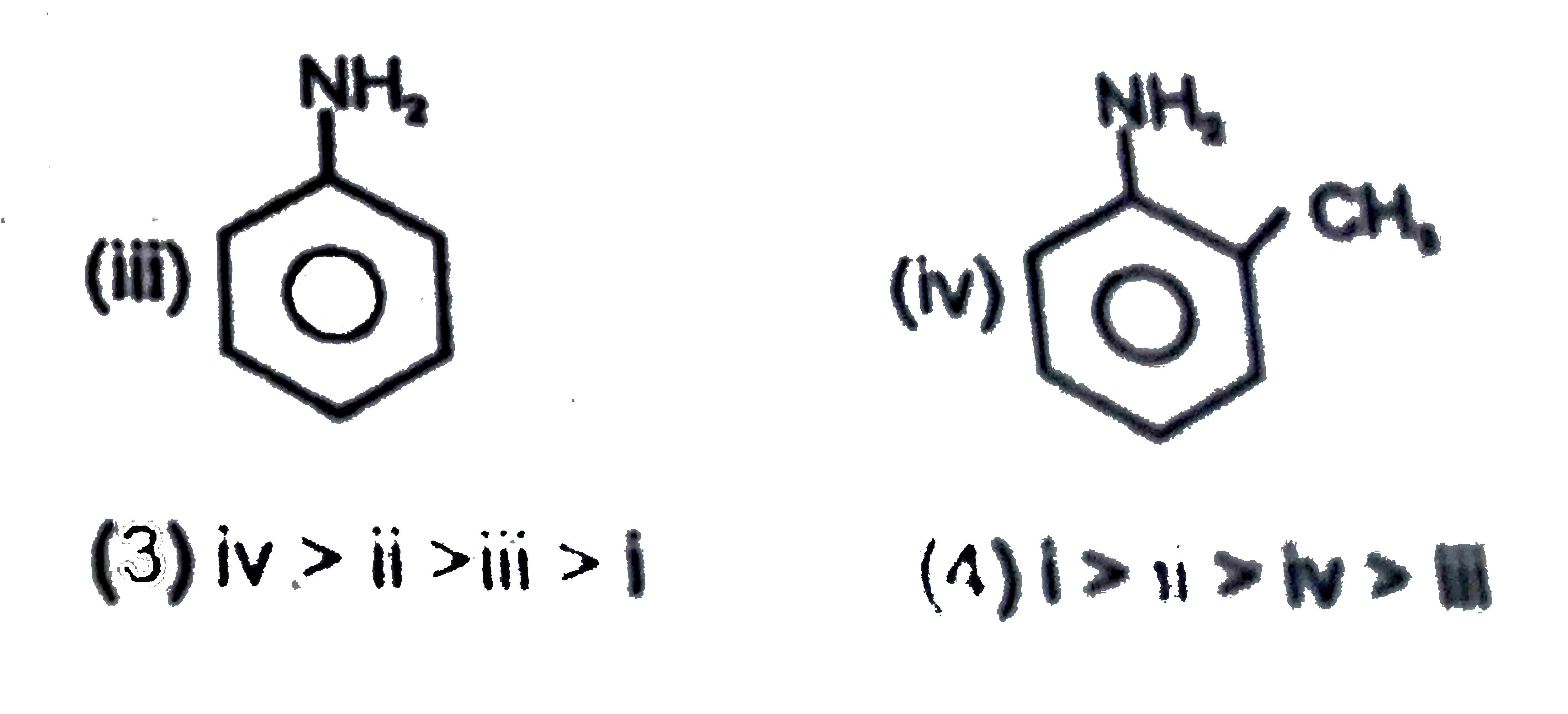Which of the following reagents cannot be used for differentiation between CH3CHOandCH3−C∣∣O−Ph ?
NaOI
Tollen's reagent
H2N−OH
Ph−NH−NH2
The correct Answer is:A, C, D
To determine which of the following reagents cannot be used to differentiate between CH₃CHO (acetaldehyde) and CH₃C(=O)Ph (acetophenone), we need to analyze the chemical behavior of these compounds with different reagents.
1. Identify the Compounds:
- CH₃CHO is an aldehyde (acetaldehyde).
- CH₃C(=O)Ph is a ketone (acetophenone).
2. Understanding the Reagents:
- NaOI (Sodium Iodide in Alcohol): This reagent is used for the iodoform reaction, which can occur with both aldehydes and methyl ketones. In both cases, it leads to the formation of iodoform (CHI₃). Therefore, it cannot differentiate between the two compounds.
- Tollens' Reagent: This reagent is a weak oxidizing agent that reacts with aldehydes to produce a silver mirror but does not react with ketones. Thus, it can differentiate between CH₃CHO and CH₃C(=O)Ph.
- Hydroxylamine (H₂N-OH): This reagent forms oximes with both aldehydes and ketones. Thus, it cannot differentiate between CH₃CHO and CH₃C(=O)Ph.
- Phenylhydrazine (PhNHNH₂): This reagent reacts with both aldehydes and ketones to form phenylhydrazones. Therefore, it cannot differentiate between the two compounds.
3. Conclusion:
- The reagents that cannot be used for differentiation are NaOI, Hydroxylamine (H₂N-OH), and Phenylhydrazine (PhNHNH₂).
- The reagent that can be used for differentiation is Tollens' reagent.
Final Answer:
The reagents that cannot be used for differentiation between CH₃CHO and CH₃C(=O)Ph are:
- NaOI
- Hydroxylamine (H₂N-OH)
- Phenylhydrazine (PhNHNH₂)
- CH₃CHO is an aldehyde (acetaldehyde).
- CH₃C(=O)Ph is a ketone (acetophenone).
- NaOI (Sodium Iodide in Alcohol): This reagent is used for the iodoform reaction, which can occur with both aldehydes and methyl ketones. In both cases, it leads to the formation of iodoform (CHI₃). Therefore, it cannot differentiate between the two compounds.
- Tollens' Reagent: This reagent is a weak oxidizing agent that reacts with aldehydes to produce a silver mirror but does not react with ketones. Thus, it can differentiate between CH₃CHO and CH₃C(=O)Ph.
- Hydroxylamine (H₂N-OH): This reagent forms oximes with both aldehydes and ketones. Thus, it cannot differentiate between CH₃CHO and CH₃C(=O)Ph.
- Phenylhydrazine (PhNHNH₂): This reagent reacts with both aldehydes and ketones to form phenylhydrazones. Therefore, it cannot differentiate between the two compounds.
- The reagents that cannot be used for differentiation are NaOI, Hydroxylamine (H₂N-OH), and Phenylhydrazine (PhNHNH₂).
- The reagent that can be used for differentiation is Tollens' reagent.
The reagents that cannot be used for differentiation between CH₃CHO and CH₃C(=O)Ph are:
- NaOI
- Hydroxylamine (H₂N-OH)
- Phenylhydrazine (PhNHNH₂)
Similar Questions
Knowledge Check
- Question 1 - Select One or More
Which of the following reagents can be used to differentiate between ph−C∣∣O−H and CH3CH2OH ?
ANaOIBFehling's solutionCTollens' reagentDZnCl2/H - Question 2 - Select One
Which of the following is an isomer of compound 1 ?
CH3CH2CHO(1) CH3−O∣∣C−CH3(2) CH3−CH=CH−OH(3) A2B4C2 and 3Dall are isomers
A2B4C2 and 3Dall are isomers
Which alkene on ozonolysis gives CH3CH2CHO and CH3C∣∣OCH3 ?
View SolutionWhich alkene on ozonolysis gives CH3CH2CHO and CH3C∣∣OCH3 ?
View SolutionPredict the product from claisen condensation of the following pair of esters.
Ph−CH2−C∣∣O−OCH3+Ph−C∣∣O−OCH3EtOΘ−−−→View SolutionArrange the following in order of their reactivity towards CH3MgBr?
(I) H3C−C∣∣O−H (II) CCl3−C∣∣O−H
(III) H3C−C∣∣O−CH3 (IV) Ph−C∣∣O−CH3View SolutionCorrect decreasing stability order of following carbanions :
ӨCH2 I−CHO CH3−C∣∣O−ӨCH−C∣∣OII −CH3 H−−∣∣OIIIӨCH−C∣∣O−H OHC−ӨC∣CHOIV−CHOView Solution(a) Complete the following equations :
(i)
(ii) CH3COOHLiAIH4−−−−→
(b) Distinguish between :

(ii) CH3−CHOandCH3−C∣∣O−CH3View Solution


